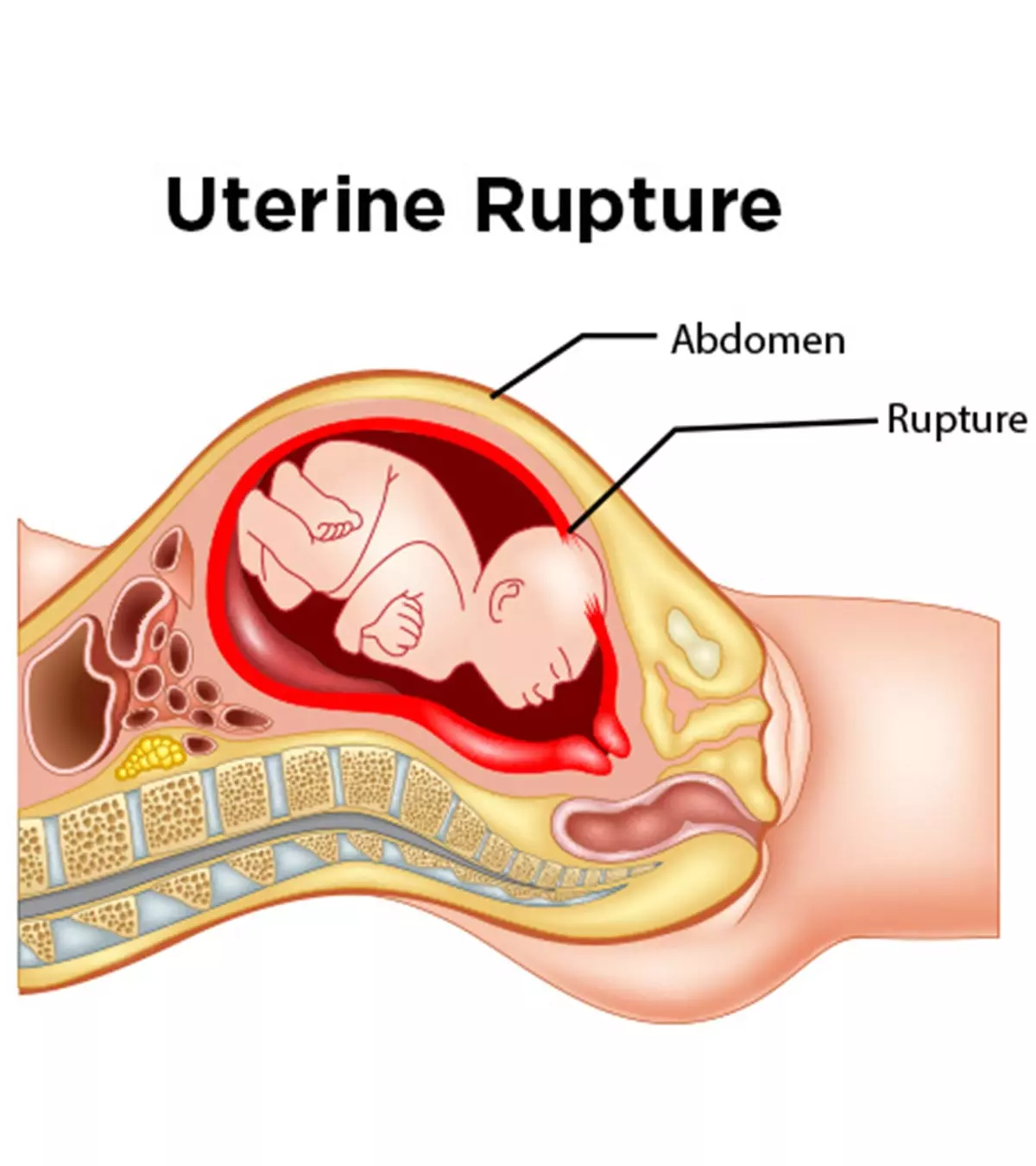

Image: Shutterstock
Thrush is a fungal infection that may occur in any part of the body. While it is not unusual to experience thrush in the nipples, nursing women may have many concerns regarding the safety and complications of nipple thrush and breastfeeding. Read this post as we explain the causes, risk factors, symptoms, diagnosis, treatment, home remedies, prevention, and more about nipple thrush in lactating women.
What Causes Thrush?
Thrush is an infection caused by the Candida fungus, which is a form of yeast (1). The fungus can settle anywhere on the skin, but will usually affect the regions that tend to be warm and moist. The thrush infection is medically called candidiasis, and when it happens on the nipple, then it is called breast thrush or breast/nipple candidiasis (2). When the fungus affects the skin, the condition is called cutaneous candidiasis.
How Can You Get Thrush?
Candida fungus is commonly found in the environment and even on your skin. It is normally present in the digestive tract and the vagina (3). Usually, the Candida population is kept under check by the immune system and other microorganisms in the body. But in some cases, the fungus could overgrow, causing thrush infections. Some risk factors increase the chances of fungal overgrowth in your body.
What Are The Risk Factors Of Getting Nipple Thrush?
The following factors and scenarios make you susceptible to nipple thrush (4):
- Cracked, damaged or injured nipples can let the fungus invade.
- Vaginal yeast infections may increase the risk of fungus overgrowth in other parts of the body. A yeast infection of the moist and warm area under the breast can also increase the risk of nipple thrush.
- Health problems such as compromised immunity or diabetes.
- The use of some medications such as antibiotics, birth control tablets, and medicines that contain compounds like steroids or cortisone make you prone to the development of Candida infection.
- A diet rich in sugar and yeast but low in vitamins and minerals may also make one susceptible to the Candida infection.
If you think you are at risk of thrush, watch out for symptoms and address the problem in time.
What Are The Symptoms Of Nipple Thrush?
Thrush of the nipples manifests the following symptoms (2):
- The nipple may become reddish to dark pink. You may notice tiny, discontinuous or continuous white patches on the nipple. Although there may be no change in the appearance of the mother’s nipples or areolas, there may be some scaling or the skin of the areola may be smooth and shiny and the nipple may be cracked.
- The sensation is often burning in nature but not all women with thrush will experience this. Burning lasts throughout the feeding, and occasionally continues after the feeding has ended.
- The nipples may be sensitive to touch.If you suspect you have nipple thrush, go to a doctor right away since it can easily spread to the baby and cause oral thrush in the little one (5).
How Is Nipple Thrush Diagnosed?
Your doctor will diagnose nipple thrush using the following methods (6):
- Visual inspection: Most physicians will be able to diagnose the condition through visual examination of the nipple, and check for discoloration or inflammation.
- Microscopic analysis: The doctor will gently scrape a small quantity of skin from around the nipple and check it under the microscope to see the presence of yeast cells.
- Fungal culture: If the initial steps yield inconclusive results, then the skin scrapings will be sent for a further fungal culture analysis. The process aims at growing the fungal cells taken from the skin, under laboratory conditions. The procedure may take a few days, but can accurately pinpoint the exact cause of the infection.
Based on the diagnosis, the doctor will recommend a suitable course of treatment.
How Is Nipple Thrush Treated?
Treatment options for nipple thrush include:
Topical antifungal creams: You have to apply a topical cream containing the antifungal compound nystatin or clotrimazole. First, air-dry the affected area to remove any moisture and then apply the cream. You may have to apply the cream multiple times, although the frequency of application depends on the doctor’s recommendation. Typically, it may be suggested that the topical cream be applied often as yeast can grow back in about 90 minutes.
The doctor may also suggest antifungal powder to minimize the accumulation of sweat and moisture. Another medicine is crystal violet, also called gentian violet. It is a deep, violet-colored antifungal liquid that you apply using a Q-tip/cotton ear bud on the nipple and areola, before a feed, once every day. It is often suggested that gentian violet should be used along with a topical anti-fungal cream. The compound is safe even if orally ingested by babies. However, use it only if the doctor prescribes it to you.
Oral antifungal medications: Oral antifungals are seldom needed but may become necessary in severe cases of nipple thrush. The medication will be a part of a systemic treatment involving both topical and oral medicines. The most common antifungal prescribed for nipple thrush is fluconazole, which is usually taken once in a day. The doctor may also prescribe oral clotrimazole lozenges.
Managing thrush at home is also vital to get the condition under control quickly.
Are There Any Home Remedies For Nipple Thrush?
Yes. Here is what you can do at home to manage the fungal infection at home and inhibit further growth or spread of the Candida fungus.
- Keep the affected area dry: Fungus thrives in moisture. Keeping the area dry is vital to slow down the growth of the fungus and expedite the recovery. Air-dry the nipples by taking off the bra for a few minutes every day or wear a breathable bra that allows adequate ventilation to the affected area and prevents the buildup of moisture.
- Use a different towel for the affected area: Using the same towel to clean your body as well as the infected nipples or breasts can further the infection by spreading the virus to the other parts of the body. This precaution can be particularly helpful if you have thrush on one nipple and not the other. Use a separate towel to wipe the infected area after a bath.
- Apply coconut oil on the affected part: Several studies have found coconut oil to be a safe home remedy to treat Candida infection (7) (8). Apply a small quantity of coconut oil on the affected part twice a day. Coconut oil contains several fatty acids that inhibit the growth of fungus and eventually destroy their colonies.
- Rinse your nipples with vinegar solution: Dilute 15ml vinegar in 250ml water and run it over your nipples once every hour, throughout the waking hours in a day. Vinegar is acidic and thus helps kill the fungus. Unlike coconut oil, vinegar causes irritation. So if you find it too painful and unbearable, then stop using it.
- Apply diluted grapefruit seed extract: Add 2-5 drops of grapefruit seed extract to 30ml of water. Soak a Q-tip/cotton ear bud in it and apply to the affected part of the body. Apply it after every feed in a day.
Some may say that probiotics are a remedy for Candida infection, but there is no substantial evidence to prove its efficacy against thrush (9) (10).
A better option would be to prevent the infection as far as possible.
How To Prevent Thrush On Nipples?
You can prevent thrush on the nipples through the following methods:
- Wash your breasts with soap every time you bathe: Use soap and warm water to clean the breasts, including the region under the breast.
- Wear a clean bra every day: Avoid wearing soiled or used bras for long. Wear a clean one every day to minimize the risk of getting nipple thrush.
- Use nursing pads: Use pads that are not plastic-lined. Get a new pad every time one gets damp
- Wash towels in hot water: Wash your towel and the baby’s in hot water. It kills the fungus that thrives on the damp cloth. Also, use a fresh towel every day.
- Prevent oral thrush in your baby: Making sure your baby does not get thrush is also a way of preventing nipple thrush. A breastfeeding infant with oral thrush can pass the infection to the mother. You can prevent oral thrush in infants by sterilizing all artificial nipples and toys. During treatment, artificial nipples should be boiled daily. These items can be carriers of the fungus. If your baby has oral thrush already, then take them to a doctor for treatment.
- Sterilize components of breast pump: Boil the components that come in contact with your breast for 20 minutes before use to prevent accidentally contracting the fungus.
Candida fungus is seldom a problem and resolves quickly within weeks of commencing the treatment. Always remember to apply a cream or a natural remedy like coconut oil after you have breastfed the infant (11). Clean off the remainder of cream or oil before you breastfeed the infant again. While treatment is simple, most mothers are concerned about their ability to breastfeed their baby when they have nipple thrush.
Can You Breastfeed With Nipple Thrush?
Yes. You can breastfeed with nipple thrush (12). Help the baby achieve a deep latch to increase the possibility of a comfortable feeding. The medicines that you get for the treatment of thrush are compatible with breastfeeding and will not harm the infant.
Wash your nipple with warm water, antifungal soap, and then dry it before feeding. It can minimize the risk of the transfer of fungus into the baby’s mouth. Make sure you apply any ointments on your nipple only after you are done with breastfeeding.
Can You Give Expressed Milk During Thrush?
Yes. You can feed expressed milk to your baby. However, make sure you feed the milk immediately after you expressed it from the breast. Medical experts state that you should not store or freeze expressed milk when you have thrush to prevent the chances of its spread.
Frequently Asked Questions
1. Will breast thrush go away by itself?
No. In most cases, breast thrush does not go away independently (13). Instead of waiting, you should consult your doctor for the medications and treatment plan.
2. Can thrush make babies fussy?
Yes. Exposure to thrush can make the baby fussy and cranky (14). They become gassy, might get diaper rashes, and white patches around the mouth. Hence, visiting the doctor is advised.
Thrush in the nipples while breastfeeding could be a challenging situation. However, it is easily manageable with timely evaluation and appropriate treatment interventions. You may not have to pause or discontinue breastfeeding your infant when you have thrush as long as your discomfort and pain are not too intense and manageable with medications prescribed by your doctor. Nevertheless, you may follow some simple precautions while nursing, such as using nursing pads and maintaining breast hygiene to reduce your risk of exposure to the fungus that causes thrush.
References
1. Candida infections of the mouth, throat, and esophagus; U.S. Department of Health & Human Services
2. L. H. Amir, S. M. Donath, S.M. Garland, et.al; Does Candida and/or Staphylococcus play a role in nipple and breast pain in lactation? A cohort study in Melbourne, Australia; NCBI(2013)
3. Vaginal Candidiasis; U.S. Department of Health & Human Services
4. Candida or thrush of the nipple and breast; Canadian Breastfeeding Foundation
5. Oral thrush in babies; NHS
6. Nipple Pain and Breastfeeding; HSE.ie
7. Ogbolu DO, Oni AA, Daini OA, Oloko AP.; In vitro antimicrobial properties of coconut oil on Candida species in Ibadan, Nigeria.; NCBI; J Med Food(2010)
8. B. Shino, F.C. Peedikayli, S.R. Jayprakash, et.al; Comparison of Antimicrobial Activity of Chlorhexidine, Coconut Oil, Probiotics, and Ketoconazole on Candida albicans Isolated in Children with Early Childhood Caries: An In Vitro Study; NCBI(2016)
9. The Role Of Lactobacillus Probiotics In The Treatment Or Prevention Of Urogenital Infections; University Of Michigan; Journal Of Chemotherapy(2009);
10. Health benefits of taking probiotics; Harvard Health Publishing;(2005)
11. Thrush and Breastfeeding; La Leche League GB
12. Breastfeeding and thrush; NHS
13. Thrush – Yeast Infection – DHS 4681; Illinois Department of Human Services
14. Comprehensive Care for Thrush Infection in Breastfeeding Mom and Baby; University Hospitals.
Community Experiences
Join the conversation and become a part of our nurturing community! Share your stories, experiences, and insights to connect with fellow parents.
Read full bio of Karen Ware Bell
Read full bio of Swati Patwal














